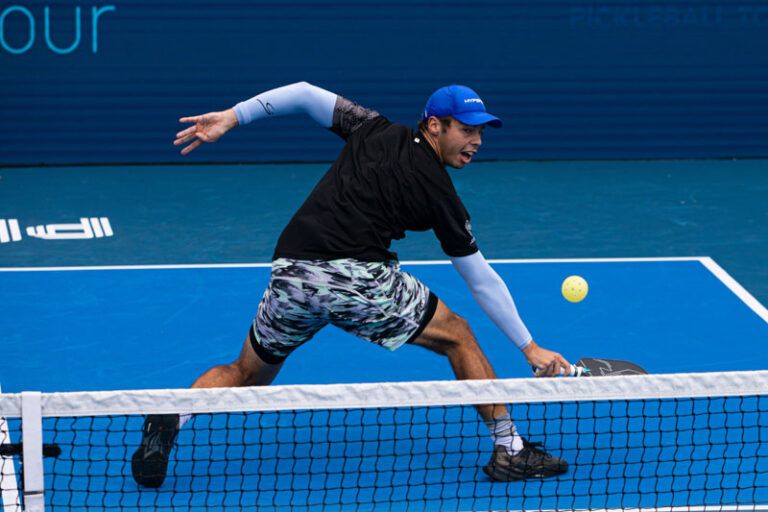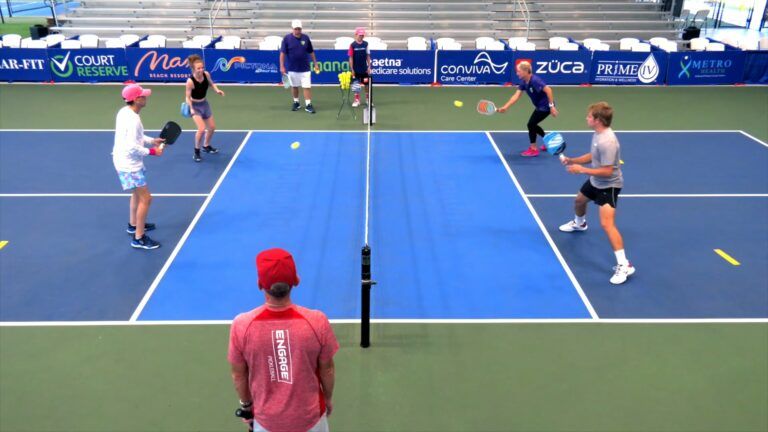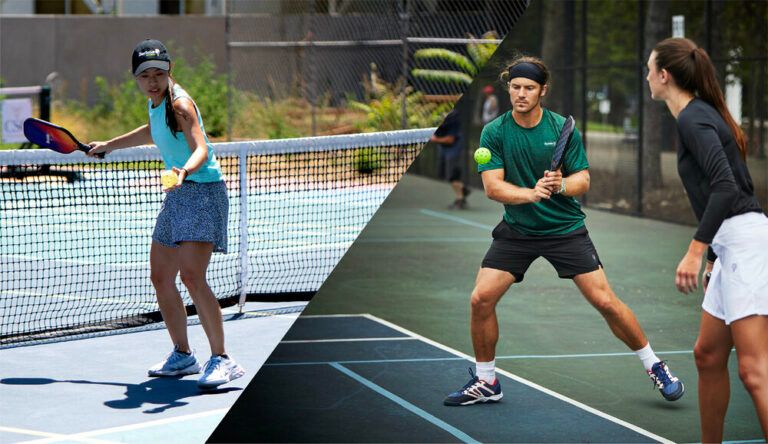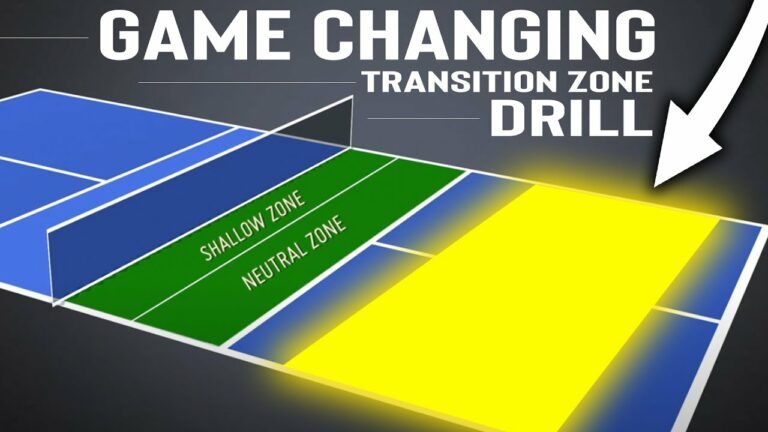Pickleball Advanced Tips - Mastering the Mental Game
In pickleball, the mental aspect of the game is just as vital as the physical skills. This section uncovers pathways to enhance focus, manage emotions, and develop a champion's mindset.
Unlocking Focus and Concentration
Achieving unwavering focus during matches can feel like trying to catch smoke with your bare hands. Yet, honing your concentration can make all the difference. Techniques such as visualization and mindful breathing can serve as anchors, helping you maintain your composure during crucial points. Research by the American Psychological Association suggests that mental training can significantly improve athletes' performance, enhancing both physical and mental capabilities. Consider incorporating mental drills into your practice routine. Imagine yourself successfully executing a third shot drop or a well-timed volley. As you immerse yourself in these mental exercises, you build a fortitude that can withstand the pressures of match play.

Taming Your Emotions
Every athlete has faced the monster of frustration, often referred to as "tilt." It's a state we recognize all too well a misguided shot here, a double-fault there, and suddenly, the entire game seems lost. Strategies to manage these emotions include developing a positive self-talk routine. Instead of berating yourself after an error, replace those negative thoughts with affirmations like, "I can execute my shots." This shift in mindset serves not only to quell frustration but also fosters a growth mentality, allowing space for improvement.
Thinking Like a Champion
To play like a champion, you must think like one. Champions don’t merely react; they operate with intent. Start analyzing your opponents’ weaknesses: observe their shot placements, body language, and even their footwork. Recognizing patterns in their play reveals opportunities to exploit, putting you in a prime position to score points. Always make calculated shot selections based on your current positioning, ensuring your best chance of success.
Advanced Shot Arsenal: Beyond the Basics
Enhancing your shot repertoire is critical for elevating your game. Advanced techniques can add layers to your playstyle, allowing you to keep your opponents guessing and create openings for points.

Expanding Your Contact Point Capabilities
Mastering shots executed from unconventional positions, such as lunging or reaching can lead to a distinct edge in matches. Practicing in challenging scenarios bolsters your reaction time and shot execution. Drills like ‘reaction catches’ or ‘off-balance volleys’ allow you to adapt to unexpected shots. This dynamic approach cultivates versatility on the court, transforming you into a player who can respond adeptly regardless of positioning.
The Third Shot: Your Weapon of Choice
Among all the shots in pickleball, the third shot drop is arguably the most strategic. It serves as the transition shot setting the stage for you to shift from a defensive to an offensive position. Aim for gentle drops that land in the kitchen. However, mastering this shot goes beyond technique; understanding spin is crucial. By utilizing slice or topspin, you can create unpredictable bounces that challenge your opponent's response, setting you up favorably for the next play.
Deceptive Speed-Ups
In the dynamic frenzy of a match, one especially effective shot is the deceptive speed-up. This tactic involves disguising a speed-up shot to initially appear like a soft dink. Target specific areas based on your opponent's weaknesses. For instance, if they're known to struggle with high balls, this blend of deception and precision can unseat their rhythm, frustrating their defensive efforts and, ideally, leading to an easy point for you.
Dink Dynamics: Controlling the Net
Dinking effectively is essential. This section explores the intricacies of positioning and shot placement that dominate the non-volley zone.

The Art of Dink Placement
The profound art of dinking lies in its subtleties. When executed with precision, dinks can control the pace of a game and dictate your opponent’s actions. Utilizing angles, target the middle of the court often, creating confusion and forcing errors from your opponents. This strategic placement not only puts pressure on your adversaries but also allows for opportunities to transition into more aggressive shots.
Two-Handed Backhand Dinking: A Game Changer
For players grappling with stability and control during dinks, the two-handed backhand offers a powerful solution. It enhances grip, providing increased stability and opportunities for imparting spin. As you practice this technique, focus on maintaining fluidity. Transitioning between dinks and speed-ups seamlessly will keep your opponent on edge, making it challenging for them to anticipate your next move.
Disguising Your Intentions
Deception is a vital component in pickleball. By maintaining consistent body mechanics during dinks and speed-ups, you confuse your opponent. They may second-guess your shots, leaving them unprepared for a swift attack. Practice this fluidity during drills, emphasizing seamless transitions between soft dinks and aggressive shots, ensuring that your intentions remain elusive until the last moment.
Serving and Returning: Setting the Tone
Your play begins with serve; how you serve and return can dictate the rhythm of the entire match. In this section, we will explore strategic methods that can swing momentum in your favor.

Strategic Serving
To seize control from the outset, implement a strategic serving plan. Aim for your opponents' backhand or their body, making your serve more challenging to return. Diversifying your serves utilizing lobs, slices, and speed variations will keep your opponent in a state of uncertainty. A study by the Journal of Sports Sciences revealed that players who served more variably had a significantly greater win rate.
Returning Like a Pro
An effective return can dismantle your opponent's strategy. When returning, aim deep with pace, pressuring your adversary. By targeting particularly aggressive players who rush the net, you can disrupt their momentum and set yourself up for control. It's essential to recognize when returning to a crashing player provides a tactical advantage offering you an upper hand at the net.
Reading Your Opponent
Anticipating your opponent's return involves keen observation of their paddle position and body language, enabling you to predict shot direction accurately. Enhancing your positioning based on these cues allows for quick adjustments, significantly increasing your chances of winning points while simultaneously minimizing reactive errors.
Doubles Domination: Partnering for Success
In doubles, synergy and communication with your partner become crucial. This section delves into effective teamwork and partnership dynamics.

The Power of Communication
Effective calls and signals are the bedrock of successful doubles play. Develop a concise communication system with your partner you should always call out where each player stands and who will take specific shots. This clarity reduces confusion, allowing your team to operate smoothly. Regular practice sessions can enhance this aspect and foster chemistry, which is indispensable in high-stakes situations.
Playing to Your Strengths
Recognizing and leveraging each other's strengths can transform your games. For instance, if one partner excels at net play while the other prefers baseline strategies, adapting your strategies to complement each other can lead to a well-rounded approach. Enhance your synergy by continually assessing and discussing your styles, cultivating a fluid partnership.
Building Chemistry and Trust
Trust is fundamental in any partnership, especially in doubles. Developing drills that emphasize communication strengthens your teamwork and builds confidence in each other’s abilities. Practicing together regularly, combined with open dialogues about strengths and weaknesses, leads to a more cohesive unit on the court, significantly increasing your chances of winning.
Transition Zone Tactics: Bridging the Gap
The transition zone is a critical area on the pickleball court. Knowing how to traverse this space effectively can set the stage for success.

The Split Step
Executing the split step effectively can enhance your reactions, allowing for greater movement when anticipating returns. Drill this movement consistently to improve your timing and efficiency. The split step not only provides stability but enhances your coverage, ensuring you're always prepared to respond effectively especially when your opponent sends a return your way.
Resetting from Transition
Cultivating the ability to reset during moments of transition is essential for regaining control. During these critical moments, keep your stance low, maintaining contact out in front. Practice resets from various court positions to ensure you can stabilize and dictate gameplay regardless of the circumstances.
The Seesaw Effect
The seesaw effect is an excellent strategy for anticipating your opponent's shots. By adjusting your paddle height based on where your opponent aligns themselves, you can better predict their next move. By incorporating this tactical awareness, you can react swiftly, enhancing your chances of retaining control during rallies.
Court Coverage and Movement: Owning the Court
Mastering court coverage is vital to becoming an elite player. This section examines techniques to optimize your movement and positioning.
Zoning: Applying Pressure and Minimizing Open Space
Understanding the concept of zoning ensures effective coverage across the court. By applying pressure strategically and minimizing available open spaces, you dictate the flow of the game while maximizing defensive efforts. Effective communication is key working closely with your partner to cover the court optimally.
Post-Contact Responsibility
Following through after making contact is a critical aspect of play. Ensure that you move to the optimal position following a shot and anticipate your partner’s needs. This proactive approach creates a dynamic gameplay environment, giving you both the upper hand as the point progresses.
Sliding on Crosscourt Dinks
Sliding effectively on crosscourt dinks expands your reach, giving you excellent positioning to respond to shots. In addition to improving your responsiveness, sliding also aids in maintaining balance during lunging attempts. This technique allows for a seamless transition between offense and defense, maximizing scoring opportunities.
Training for Excellence: Taking Your Game to the Next Level
Continuous improvement is essential in pickleball. This section outlines training methods that can elevate your performance.
Warming Up Like a Pro
Before stepping onto the court, engage in a focused warm-up that simulates real game situations. Target specific weaknesses and incorporate drills tailored to improving shot consistency. Structuring your practices thoughtfully ensures that you enter matches ready to perform at your best.
Drilling for Success
Mastering challenging techniques requires dedication. Engage in targeted drills for specific shots, such as drops and blocks, utilizing feedback from your partner or coach. This focused approach allows you to explore advanced strokes and strategies in depth, leading to observable improvements in your gameplay.
The Power of Video Analysis
Recording your matches offers excellent insights into areas needing improvement. Analyze footage to objectively evaluate your technique, footwork, and court positioning. Incorporate this analysis into your training routine to track your progress and set meaningful targets for improvement.
Staying Ahead of the Curve: The Evolving Game
Pickleball is a constantly changing sport, making it crucial to adapt. In this section, we will discuss trends and changes that impact how the game is played.
Adapting to New Trends in Advanced Play
To remain competitive, staying informed about current trends in the game is essential. Advanced players often adopt new strategies and techniques, such as hybrid shots and optimized court positioning. Continuous education through workshops or online resources allows you to keep your skills sharp and relevant.
Understanding Recent Rule Changes and Their Impact
Like many sports, pickleball has seen changes in rules that may alter strategies. Stay updated on these changes through resources such as the official rulebook and credible pickleball organizations. Being keenly aware of the existing regulations prepares you for competitive environments, keeping your game up to par.
Conclusion
Elevating your pickleball game requires a multi-faceted approach, blending skill enhancement and mental fortitude. By applying the advanced tips outlined from mastering the third shot drop to effective communication in doubles you can sharpen your performance and grow as a player. Remember, pickleball isn't just about winning but also enjoying the process of learning and improving. Embrace the journey, stay committed, and watch as your game transforms. Whether you're vying for a championship title or simply enjoying a friendly match, the strategies outlined can help you stand tall on the court, ready to seize any opportunity that comes your way.










